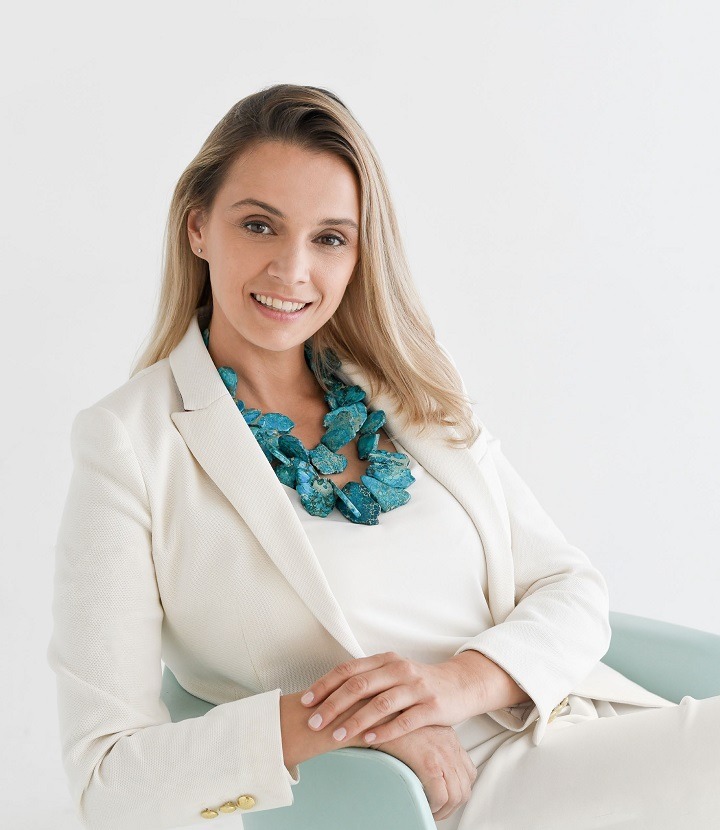WORDS: SAVA MICICH
When you put your house in order, you put your affairs and your past in order too. Marie Kondo
Do we call the space we live in our home, or just a house or apartment? The space that surrounds us is very important because as much light as there is, in equal amount peace enters, we obtain that level of freedom and protection from the outside world and enjoy the feelings evoked upon entering our space. Similarly, the development of our thoughts and relationships are to some degree dependent upon the thankfulness we hold toward furnishings and other items that surround us in our homes. Marie Kondo, the illustrious organizer of spaces, in her book The Life-Changin Magic of Tidying Up outlines the five categories of possessions that help us ascertain whether our lives are filled with satisfaction and positive energy. These five categories have been developed very carefully after years of experience working with clients, and organizing one’s home begins by breaking down the process into these five parts, as opposed to working room by room as may be the common wisdom. Proceeding with this strategy, it is very important to devote oneself to completion. The moment one finishes all five categories, creating future disorder in the home will be less likely as you will be more apt to learn to live in the moment. This in turn will allow for enhanced relationships with friends and adversaries alike, colleagues, acquaintances, and partners.
We don’t notice everything we have and the moment we complete our organization fest of home, there begins the second dimension of focus and priorities. Our house is a reflection of our internal state of being.
 In the same way that our physical selves rely upon a delicate balance of chemicals that allow us to think, keep safe from invading microorganisms, process sensory stimuli, and build our bodies to a strong and healthy self, we rely on our surroundings to accomplish the same for our minds, emotions, and spirits. All of nature is very much ordered, including the human body, where there is interplay among systems and cells, all of which can act independently but also influence positively or negatively their neighboring cells. Our homes and other immediate surroundings have that same influence upon our well-being, either generating positive energy or depleting it by inefficiently wasting it. Our inner being craves order and abhors chaos. The baggage that we carry leads to this chaos which in turn leads to a cluttered mind, and hence an inefficient and utterly unsustainable way of life.
In the same way that our physical selves rely upon a delicate balance of chemicals that allow us to think, keep safe from invading microorganisms, process sensory stimuli, and build our bodies to a strong and healthy self, we rely on our surroundings to accomplish the same for our minds, emotions, and spirits. All of nature is very much ordered, including the human body, where there is interplay among systems and cells, all of which can act independently but also influence positively or negatively their neighboring cells. Our homes and other immediate surroundings have that same influence upon our well-being, either generating positive energy or depleting it by inefficiently wasting it. Our inner being craves order and abhors chaos. The baggage that we carry leads to this chaos which in turn leads to a cluttered mind, and hence an inefficient and utterly unsustainable way of life.
Much of the process of creating efficiencies and energy as instructed by use of the five categories, is as rejuvenating as completion of the project. The process gives the opportunity to connect with our life up to that point and to approach it with respect in preparing to deal with those items we have in our home. We can reflect holistically about our lives through that which we allow occupy space in our homes. Rather than moving from room to room and putting things away (tidying), the goal is to remove unnecessary and not joy-inspiring items from our homes. Rather we work throughout the home in categories of (in order) clothing, books, papers, Komono (Japanese for miscellaneous), and sentimental and are ordered as a progression. Clothing usually is something we collect without really thinking about it, on a whim, and rarely has any real sentimental value, while books sometimes do hold such value. However many will never be read, and those that have been read will rarely be re-read. Outside of vital documents, papers hold no practical value and just take up valuable space in our homes. Anything important can always be digitized. Komono is a result of things collected, but without any sense of what we will do with it or if we will ever use it (e.g. electrical cords, trinkets, gadgets). Much of the time we don’t ever use these things, and like papers, much of it should be discarded from our homes. Finally, the sentimental category, as being the most difficult, will be easier if we fully understand and accept the purpose of reclaiming our homes from the things we collect, and using our homes to “spark joy” in the words of Marie Kondo. Our purpose is to transform the home into a sacred space, a power spot filled with energy.
By creating this sacred space, a lot of the energy life offers us becomes unlocked and ready to be used for the fulfillment of the potential found deep within. Energy is neither created nor destroyed but is transformed from one form to another (Second Law of Thermodynamics). As nature controls the flow of energy to make life on Earth sustainable and full of life, our own approach to life will determine what we make of it. The energy around us contributes to the formation of our thoughts, and our thoughts determine our lives. Most religious and philosophical traditions stress that letting go is very important in building internal fortitude and integrity and that thankfulness for everything (including the things discarded) has great benefits to your own spiritual well-being as well those with whom you share your home.
May your home offer you satisfaction every time you enter. We shouldn’t underestimate how our disorganized space contributes to “noise” and chaos. When everything is in its place, you will be more in tune with your goals and desires in life and with those around you.



